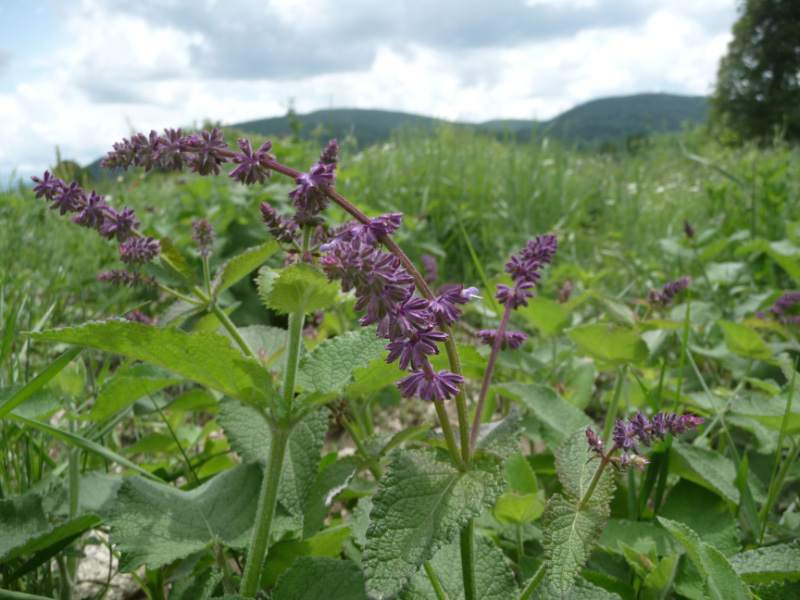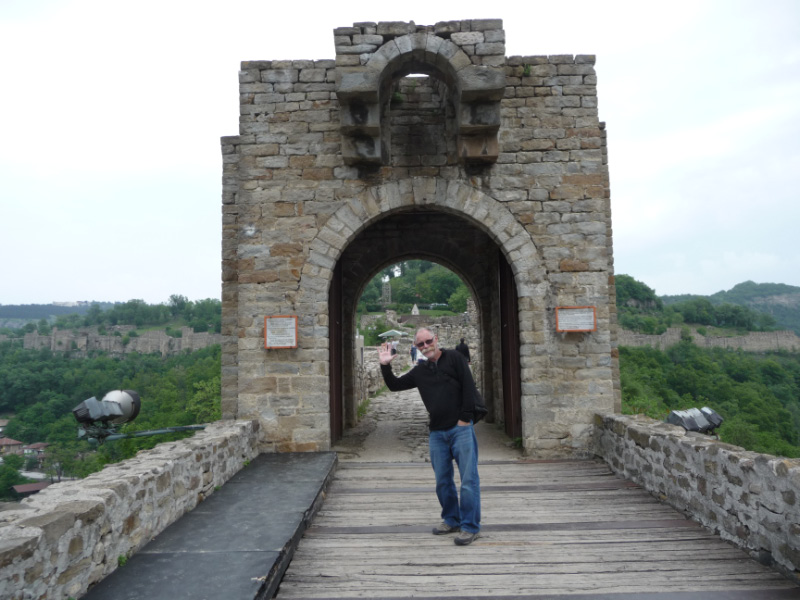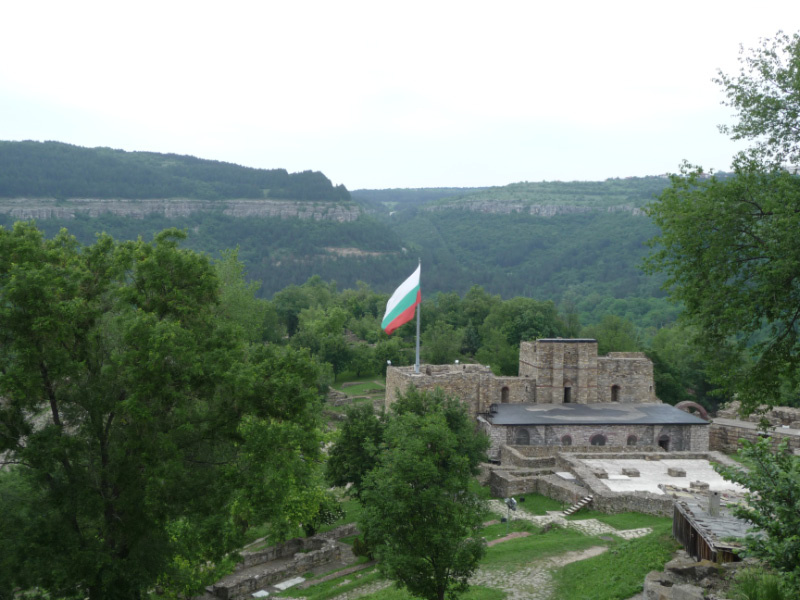Sunday 20 to Tuesday 22 May 2012
Turning our unplanned time in Bulgaria to something more concrete was fun. Thanks to the disinterested travel agent and Triposo and Wikipedia we cobbled together something of a plan to see some of the country and learn some of it’s history.
The country isn’t large, but the roads aren’t good either, so we were limited. Accuweather also told us that we would suffer overcast and wet weather, so the mountains to the west were not a good idea.
We drove west from Sophia on the road towards Burgas on the Black Sea. We found a lovely little coffee shop for a cheese pie and coffee. Next we reached the area where rose oil is famous and saw fields of beautiful roses. Their perfume was stunning, sweet like Turkish Delight. We then turned north to cross the Troyaski at 1525m and just below the cloud line. From the monument dedicated to the liberation struggle of the Bulgarians on the peak of Goraltepe we could see to the north and south. The drive up and down the mountain was hairy with many twists and turns on a narrow road. Oh, and the wildflowers were beautiful.
Veliko Turnovo has a turbulent history in a rich, fertile land which has seen many conquerors. Veliko Turnovo was initially settled by Thracians in the Hellanistic period. Rome extended her empire into the region, which led to a Byzantine period upon Rome’s decline. The Assen brothers took control and created the second Bulgarian Empire in the 12th to 14th centuries but were overthrown by the Ottomans who held power for 500 years until the Bulgarian Liberation in 1877. Veliko Turnovo was the again the capital following the Bulgarian Liberation in 1877, before suceeding to Sophia.
The Tsarevets Fortress which was the cornerstone of power in Veliko Turnovo was built and rebuilt using local and imported materials. The Royal palace for example includes many Roman marble statues, columns and steels amongst local rock in its construction.
We tried walking to Arbanassi a small prosperous village just 4km north. Alas, lack of tourist infrastructure beat us and we finally gave in and drove there. In the 17th and 18th centuries Arbanassi was occupied by rich traders who built beautiful houses, but we committed the cardinal tourist sin of arriving on a Monday. They called it “cleaning day”.
The Danube sounded enchanting, and so did the town of Ruse which has the only bridge crossing the Danube between Bulgaria and Romania. Whilst the centre of town, known as Little Vienna was lovely with its 19th- and 20th-century Neo-Baroque and Neo-Rococo architecture, it was surrounded by heavy industry and flat farming.
The drive back sounded interesting with a stop planned to see the rock-hewn Churches of Ivanovo, perhaps like Cappadocia. Alas, the tourist office was closed and the track too muddy to navigate.
On our last night in Veliko Turnovo there was a massive thunderstorm, lightening bursting “just inches away”. It was the end of an interesting and yet sometimes frustrating experience.
e_header.jpg)

























